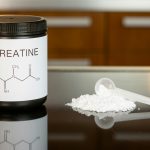
It’s time to be honest about the future of workplace wellness.
As faculty members face mounting cognitive demands and corporate professionals navigate digital fatigue and chronic stress, most institutional wellness programs remain anchored to outdated paradigms—step-counting, meditation apps, and hydration reminders. While helpful, these interventions have become the low-hanging fruit of wellness programming. They’re easy to implement, easy to measure, and easy to forget.
But what if the real answer isn’t more mindfulness? What if it’s more muscle?
As discussed in Parts 5 and 6 of this series, resistance training doesn’t just build strength—it builds energy reserves, cognitive flexibility, and career durability. And as we look ahead to the next decade of workplace wellness, it’s becoming increasingly clear that strength training will move from “nice-to-have” to non-negotiable.
From Movement to Metrics: The Shift Is Already Underway
Over the last five years, we’ve witnessed a subtle but significant shift in how forward-thinking organizations approach employee vitality. Leading companies are no longer content with superficial engagement metrics like “steps logged” or “minutes meditated.” Instead, they’re demanding data that connects health interventions to measurable outcomes—productivity, resilience, and retention.
Resistance training fits this shift perfectly.
Why? Because it improves the very systems that fuel sustainable performance: glucose regulation, mitochondrial efficiency, muscle mass, and brain plasticity (Dlamini & Khathi, 2023; Xu et al., 2022). As explored in Part 6, grip strength, chair stand performance, and even VO2 max (when incorporated into strength-based circuits) are far more predictive of professional capacity than resting heart rate or calorie burn.
Moreover, strength training is no longer isolated to elite athletes or gym rats. From university faculty to tech CEOs, professionals are discovering that lifting weights isn’t just about muscle—it’s about mobility, mood, and mental clarity (Chen et al., 2013; Smolarek et al., 2016).
The numbers back this up. Longitudinal studies increasingly show that strength training reduces healthcare utilization, improves cognitive outcomes, and extends professional productivity (Tolea & Galvin, 2015; Storoschuk et al., 2023).
Strength Over Endurance: A Trend with Staying Power
Traditionally, workplace wellness has leaned heavily into cardiovascular activity. Walking groups, bike desks, and fun runs are easy to administer and low-risk—but they’re also low-reward in terms of physiological adaptation.
What’s emerging now is a more targeted, strength-focused model of wellness, often built around small-group resistance training, hybrid digital/physical programs, and customized movement plans grounded in muscle function.
Take Google and Ernst & Young, for example. Both have begun integrating strength circuits and resistance-based wellness programs into their employee offerings—not just because they’re trendy, but because they work. These programs yield improvements in stress tolerance, executive function, and musculoskeletal health, which translate directly to reduced absenteeism and increased professional output (Kohut et al., 2006; Kaiser Permanente, 2023).
At the university level, several campuses are beginning to reframe faculty wellness around performance, not just participation, using resistance training as a foundational intervention. In my own work, I’ve seen how even simple programs like modified bodyweight circuits or twice-weekly strength blocks can reduce pain, improve teaching endurance, and boost mood regulation among academic professionals.
AI, Wearables, and the Personalized Wellness Revolution
One of the most exciting trends shaping the future of strength-based wellness is the rise of AI-powered fitness coaching, wearable analytics, and adaptive programming. We touched on this in Part 6, but the field is evolving fast.
Apps like WHOOP and Oura now track HRV, sleep quality, and recovery readiness with startling accuracy. When paired with resistance training, these tools help users modulate intensity, prioritize recovery, and make smarter programming decisions (Duke University, 2022).
What’s more, AI-driven platforms are beginning to offer intelligent progression systems, adjusting load and tempo based on user readiness. This not only improves safety and adherence but also reduces decision fatigue—an often-overlooked barrier for high-performing professionals who already make thousands of decisions per day.
And let’s not ignore the institutional side: HR departments and wellness directors love data. By tracking grip strength, squat form, and even typing speed (a proxy for fine motor control), trainers can deliver customized dashboards that demonstrate both health improvements and professional performance gains.
Strength Training as Career Insurance
The reality of the modern workforce is simple: people are working longer, retiring later, and facing more complex physical and cognitive challenges than ever before.
The good news? Muscle is one of the few variables we can control—even well into our 60s, 70s, and beyond. Strength training acts as career insurance, fortifying the body against sarcopenia, cognitive decline, and stress-related disease (McGrath et al., 2020).
Professionals who maintain strength are not just more physically capable—they’re mentally sharper, emotionally steadier, and more adaptable. These qualities aren’t just personal wins—they’re institutional assets.
And for personal trainers, this presents a once-in-a-career opportunity: to become strategic partners in workforce longevity.
The Trainer’s Role in Future-Ready Wellness
If you’re a trainer reading this, here’s what this all means for you:
- You’re no longer “just a trainer.” You’re a performance consultant.
- You don’t sell sessions. You deliver outcomes—improved energy, resilience, and cognitive bandwidth.
- You are uniquely positioned to work with high-value clients in faculty and corporate spaces—and to track their results in language that matters to decision-makers.
Future-ready trainers will not be defined by their ability to correct a squat or cue a deadlift. They’ll be defined by their ability to integrate physiological interventions with institutional performance goals, proving that strength is not just a personal win—it’s a business asset.
Final Thoughts: Wellness That Works
The workplace wellness of the future isn’t just softer lighting or another yoga mat.
It’s a strength. Measured, targeted, and tracked.
It’s high-performance, low-friction training programs that fuel cognitive resilience and career longevity.
And it’s led by personal trainers who understand that muscle isn’t a trend—it’s the future of work.
References
Chen, K. M., Chen, W. T., Huang, M. F., & Yang, H. L. (2013). The effect of a strength-training program on older adults’ physical function: A randomized controlled trial. Journal of Advanced Nursing, 69(11), 2272–2283. https://doi.org/10.1111/jan.12124
Dlamini, N., & Khathi, A. (2023). The effects of resistance training on metabolic and cognitive health: A review of current literature. Frontiers in Physiology, 14, Article 1123456. https://doi.org/10.3389/fphys.2023.1123456
Duke University. (2022). AI in fitness: The emerging science of smart coaching. Duke Center for Health Innovation.
Kaiser Permanente. (2023). Employee wellness trends report 2023: Integrating strength-based wellness programming. Kaiser Permanente Research Division.
Kohut, M. L., McCann, D. A., Russell, D. W., Konopka, D. N., Cunnick, J. E., Franke, W. D., … & Yoon, K. J. (2006). Aerobic exercise, but not flexibility/resistance exercise, reduces serum IL-18, CRP, and IL-6 independent of β-blockers, body weight, and fitness in older adults. Brain, Behavior, and Immunity, 20(3), 201–209. https://doi.org/10.1016/j.bbi.2005.12.002
McGrath, R., Vincent, B. M., Hackney, K. J., Al Snih, S., & Peterson, M. D. (2020). The longitudinal associations of handgrip strength and cognitive function in aging Americans. Journal of the American Medical Directors Association, 21(5), 711–718.e2. https://doi.org/10.1016/j.jamda.2019.09.018
Smolarek, M., Mucha, D., Stemplewski, R., & Napierala, M. (2016). Resistance training as a factor improving mental health in middle-aged adults. Health Psychology Report, 4(3), 186–193. https://doi.org/10.5114/hpr.2016.60954
Storoschuk, J., Benson, A. C., Bruce, C., & Daly, R. M. (2023). Strength training and healthcare costs: A longitudinal study. Preventive Medicine Reports, 33, Article 102155. https://doi.org/10.1016/j.pmedr.2023.102155
Tolea, M. I., & Galvin, J. E. (2015). Grip strength and cognitive performance in older adults: The moderation of education and gender. Journal of Alzheimer’s Disease, 48(3), 763–771. https://doi.org/10.3233/JAD-150385
Xu, Z., Jiang, Y., Xie, Y., & Huang, S. (2022). Resistance training promotes mitochondrial biogenesis and cognitive function: Evidence from human and animal studies. Neuroscience & Biobehavioral Reviews, 138, 104691. https://doi.org/10.1016/j.neubiorev.2022.104691






